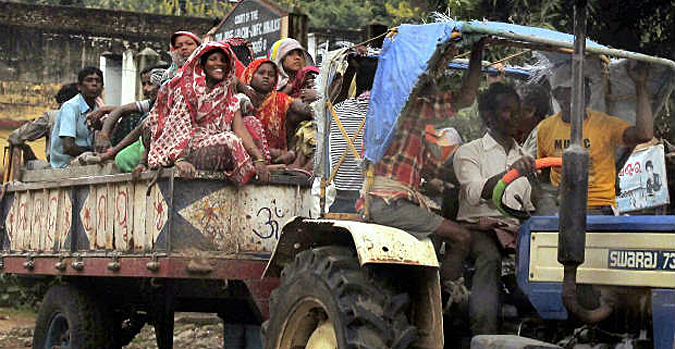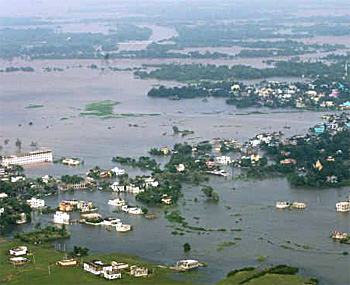Partners for resilience reports successful disaster preparedness for cyclone Phailin, India

India's disaster preparedness has succeeded in dramatically reducing the loss of lives of cyclone Phailin last weekend. While the power of Phailin was a category stronger than the 1999 Odisha cyclone, India timely evacuated nearly a million people from the coastline.
This is reported by Partners for resilience, a global programme by Wetlands International, Cordaid, Care NL and Red Cross Netherlands combining the restoration of ecosystems - that intensify natural hazards - with improving the resilience of poor communities by disaster risk reduction.
Fewer reported casualties
While the 1999 cyclone caused the deaths of about 10,000 people, with cyclone Phailin so far 6 deaths have been reported and around 18 are missing.
 The massive evacuation of almost 1 million people in India is an important achievement of cooperation between disaster managers and response agencies in India, concludes Wetlands International.
The massive evacuation of almost 1 million people in India is an important achievement of cooperation between disaster managers and response agencies in India, concludes Wetlands International.
While the damage to housing and infrastructure is massive and fuller information on the actual loss of assets will be available later, this is an important successful case for everyone working on disaster risk reduction.
Communities took early action Wetlands International works together with humanitarian, development and environment organisations (CARE Nederland, Cordaid, the Red Cross, the Red Cross/Red Crescent Climate Centre) to improve the disaster resilience of 212 villages in the northeastern States of Odisha and Bihar.
Fifthy of these villages were hit by the cyclone and thanks to the involvement of Wetlands International and Cordaid in this area communities were able to take preparedness measures, implement their contingency plans and took early action.
Risk assessments for each village
Under a global, large scale program Partners for Resilience, Wetlands International and Cordaid together with local partners have conducted risk assessments in each of the villages and connect risk reduction plans of those villages that have similar risk contexts. There are for instance coastal regions that face hazards like coastal storms, coastal erosion and intrusion of salt water, while more inland delta regions bear commonalities such as floods from rivers.
Larger and more efficient scale
In this way risk reduction measures can be planned at a larger and more efficient and long-lasting scale. This approach enhances regional resilience and allows to build in ecosystem management and climate change adaptation approaches.
Measures to reduce risk include greening the coastline to restore degraded ecosystems into more disaster resilient systems, maintaining a free flow of water to reduce water logging and better management of upstream hydraulic structures.
This news item was originally published on the website of Wetlands International.
More information
Partners for resilience
www.partnersforresilience.nl
Wetlands International
Wageningen, the Netherlands
+31 318 660910
www.wetlands.org
See the animation made by Deltares of cyclone Phailin making landfall on October 11, 1500 UTC the Andrah Pradesh coast, India. The animation shows predicted wind vectors and a surge level upto almost 2,5 m.



